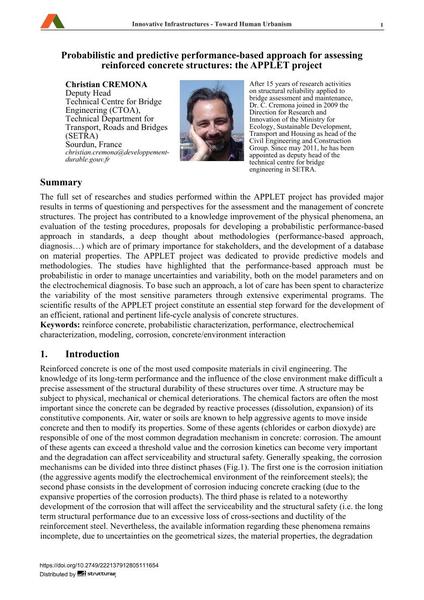Probabilistic and predictive performance-based approach for assessing reinforced concrete structures: the APPLET project

|
|
|||||||||||
Détails bibliographiques
| Auteur(s): |
Christian Crémona
|
||||
|---|---|---|---|---|---|
| Médium: | papier de conférence | ||||
| Langue(s): | anglais | ||||
| Conférence: | 18th IABSE Congress: Innovative Infrastructures – Towards Human Urbanism, Seoul, Korea, 19-21 September 2012 | ||||
| Publié dans: | IABSE Congress Seoul 2012 | ||||
|
|||||
| Page(s): | 1165-1172 | ||||
| Nombre total de pages (du PDF): | 8 | ||||
| DOI: | 10.2749/222137912805111654 | ||||
| Abstrait: |
The full set of researches and studies performed within the APPLET project has provided major results in terms of questioning and perspectives for the assessment and the management of concrete structures. The project has contributed to a knowledge improvement of the physical phenomena, an evaluation of the testing procedures, proposals for developing a probabilistic performance-based approach in standards, a deep thought about methodologies (performance-based approach, diagnosis…) which are of primary importance for stakeholders, and the development of a database on material properties. The APPLET project was dedicated to provide predictive models and methodologies. The studies have highlighted that the performance-based approach must be probabilistic in order to manage uncertainties and variability, both on the model parameters and on the electrochemical diagnosis. To base such an approach, a lot of care has been spent to characterize the variability of the most sensitive parameters through extensive experimental programs. The scientific results of the APPLET project constitute an essential step forward for the development of an efficient, rational and pertinent life-cycle analysis of concrete structures. |
||||
